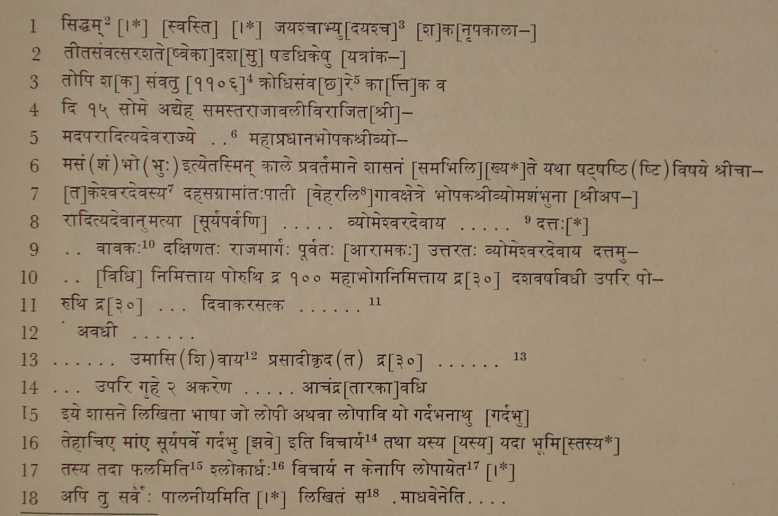|
The Indian Analyst
|
North Indian Inscriptions |
INSCRIPTIONS OF THE SILAHARAS OF NORTH KONKAN
Vyomaśaṁbhu. The boundaries of the field are mentioned in line 9. The record further mentions the gifts of some Pōruthi drammas for the mahābhōga and other service of the Śiva-liṅga. The inscription ends with the usual Ass-curse. It also mentions the scribe Mādhava, who wrote the grant on the stone, and Gōpirāja (?) who recorded the royal order. .. Vyomasambhu who made the present grant, is also mentioned in the Bassein Stone inscription of Haripāladēva, dated Śaka 1083, as one of the two persons who caused the jīrṇōddhāra of a temple probably situated at Lonāḍ. .. As for the place-names mentioned in the present inscription, Shatshashṭi is, of course, modern Sāshṭī of Salsette. Vēharali has been identified by Dr. Dikshit with Viharoli, half a mile south of Kōṇḍivaṭē in the Ṭhāṇā District. Dahasa cannot be identified in its vicinity. Text [1]
[1] From the facsimile plate No. XIV in P.M.K.L.
|
|||||||||||||||||||||||||||||||||||||||||||||||||||||||||||||||||||||||||||||||||||||||||||||||||||||||||||||||||||||
| > |
|
>
|








